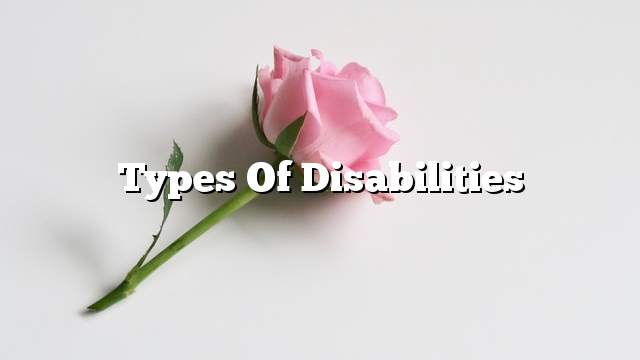Disability
Disability is defined as a defect in one of the functions of the body or a total loss of this function as a result of an accident, a defect during childbirth, or a disease. Often, this disability does not stop the activities related to it, , Social or professional, and we will talk here about the types of disabilities as follows:
Types of disabilities
Motor disability
This disability results from the inability to move partially or completely, and thus the inability to perform many activities and motor skills such as walking or carrying some things, this is called semi-paralysis, total or quadruple according to the parts of the movement, In the letters, specifically electrocardiogram, in addition to some brain injuries, and the patient is forced to use certain tools such as the stick, crutch, wheelchair, or the addition of some prostheses.
Sensory disability
These include three types of disabilities, most notably audiovisual and audio-visual as follows:
- Hearing disability: In which the patient loses his or her hearing ability, partially or completely, and the patient uses here aids to hearing or relying on sign language.
- Visual disability: Where the patient can not see partially or completely, due to various reasons such as a defect in the retina or blue water or some problems that affect the muscles of the eye, and is learning here in ways that rely on the use of tapes or Braille system.
- Speech disability: In which the injured person is partially or totally lost and communicates with him using sign language.
mental handicap
This type of disability is caused by a decrease in the level of intelligence in humans, or as a result of certain mental illnesses or disorders. Therefore, the patient suffers from social or behavioral disorders. There are also mental disabilities related to genetic or environmental factors that may be minor, moderate or severe. On the person and determine the level of his mental disability by taking into account three things and includes the following:
- Average brain function of the casualty, with a value of less than 70.
- Inability to do two or more jobs at the same time.
- Very childish behaviors of the child.
intellectual disability
Some are referred to as learning disability or mental impairment, which result in a disorder in the higher brain functions, such as inability to concentrate, count or retrieve information, and thus affect the behavior and behavior of the injured person.
